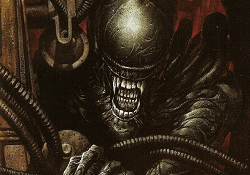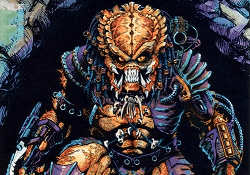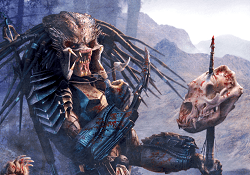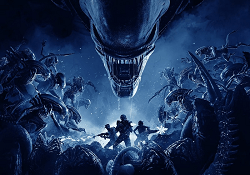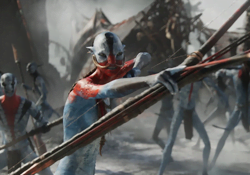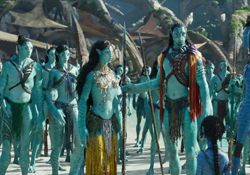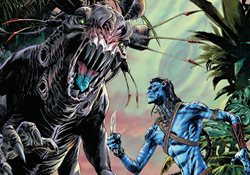T. Ocellus: Anatomy Of Alien Earth's Eye Octopus
T. Ocellus (Trypanohyncha Ocellus, also known as Species 64 or simply “The Eye Octopus”) was a parasitic extraterrestrial life‐form featured in Alien: Earth. It was discovered aboard the USCSS Maginot and later unleashed chaos during and after the ship crashed in Prodigy City on Earth. It was known for its eye‐like body, intelligence, and ability to control hosts via ocular replacement.
The Trypanohyncha Ocellus
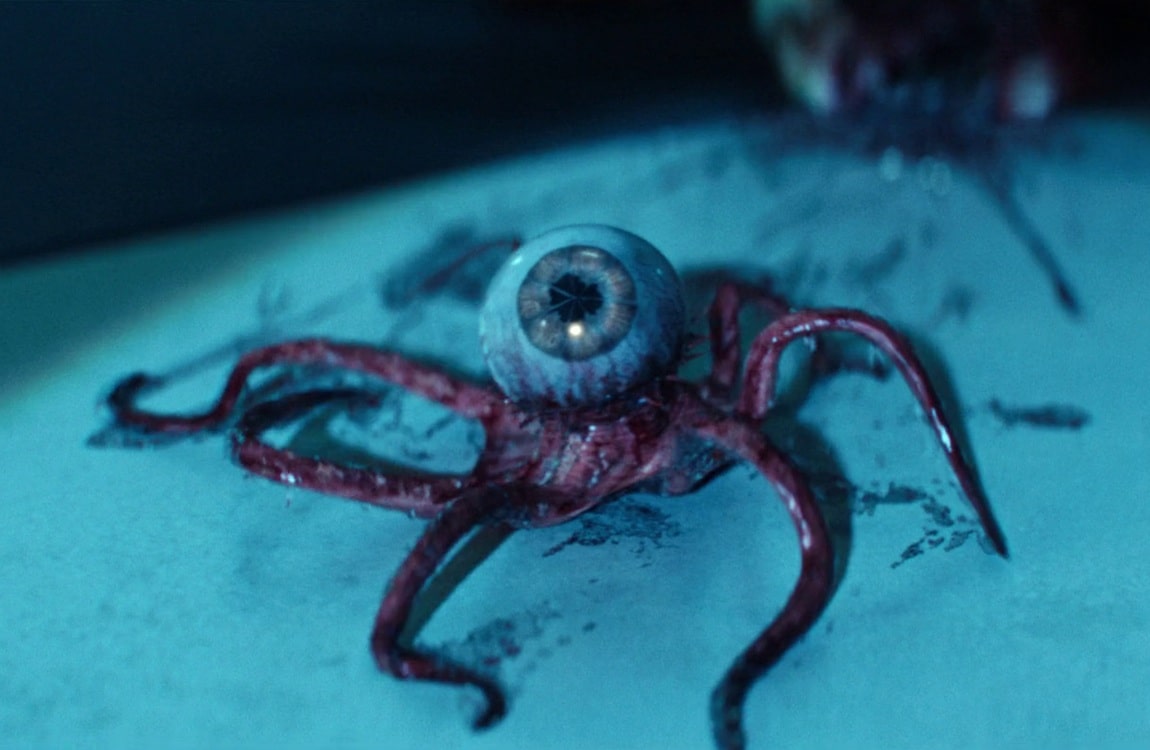
T. Ocellus was classed as a parasite, catalogued by the crew of the Maginot, and displayed characteristics quite distinct among known alien species: a smooth, rounded central ocular body with multiple irises and a retractable tentacle system that could attach to, dislodge, and replace the eyes of living organisms. Once the creature rooted itself in a host’s eye socket, it bypassed the natural neuro-transmission to exert control over the host’s body. The creature’s name derived from the term “ocellus,” meaning small eye, in reference to its central appearance. In some way, the T Ocellus is similar to a Facehugger, but does not produce a new organism once it infects a host.
T. Ocellus Origins
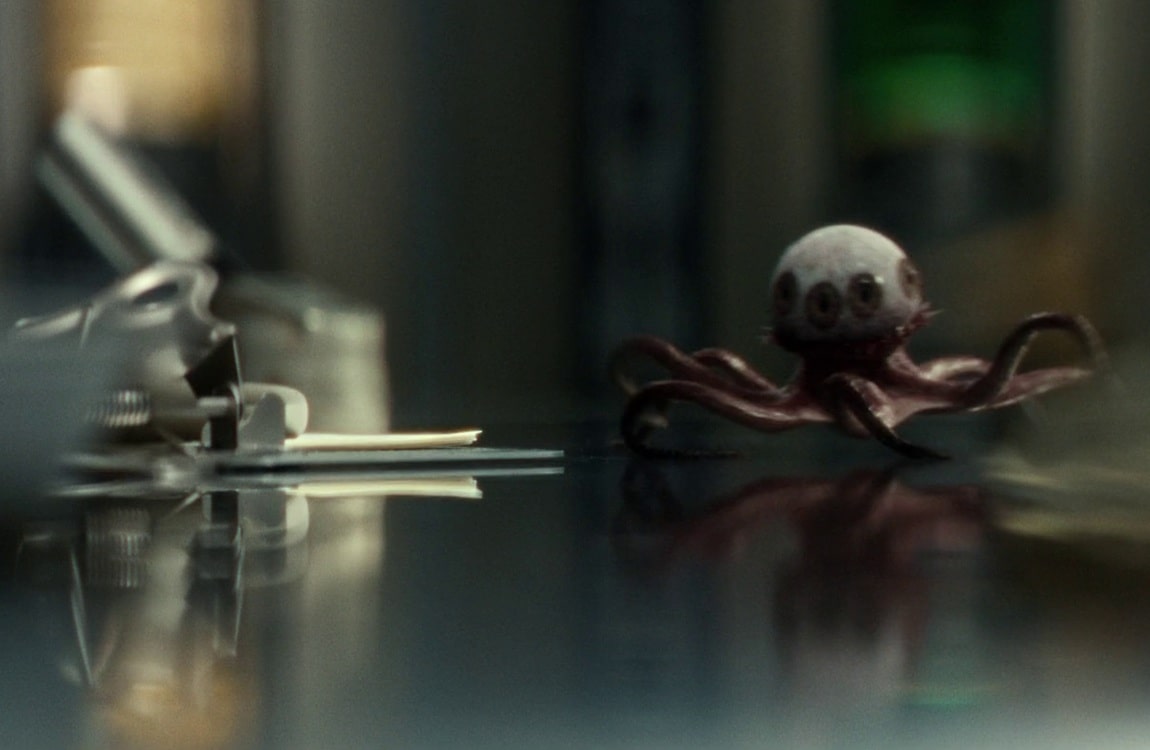
T. Ocellus was found during a long mission by Weyland-Yutani Corporation aboard the USCSS Maginot during its 65-year-old mission. The specimen was collected and studied over time, first in containment, then in laboratory settings. Before the ship crashed into Earth’s Prodigy City, the specimen escaped containment, among some of the others. The Maginot had been transporting five different alien species (including Xenomorph eggs), and T. Ocellus was one of the lifeforms stored for research.
T. Ocellus Anatomy
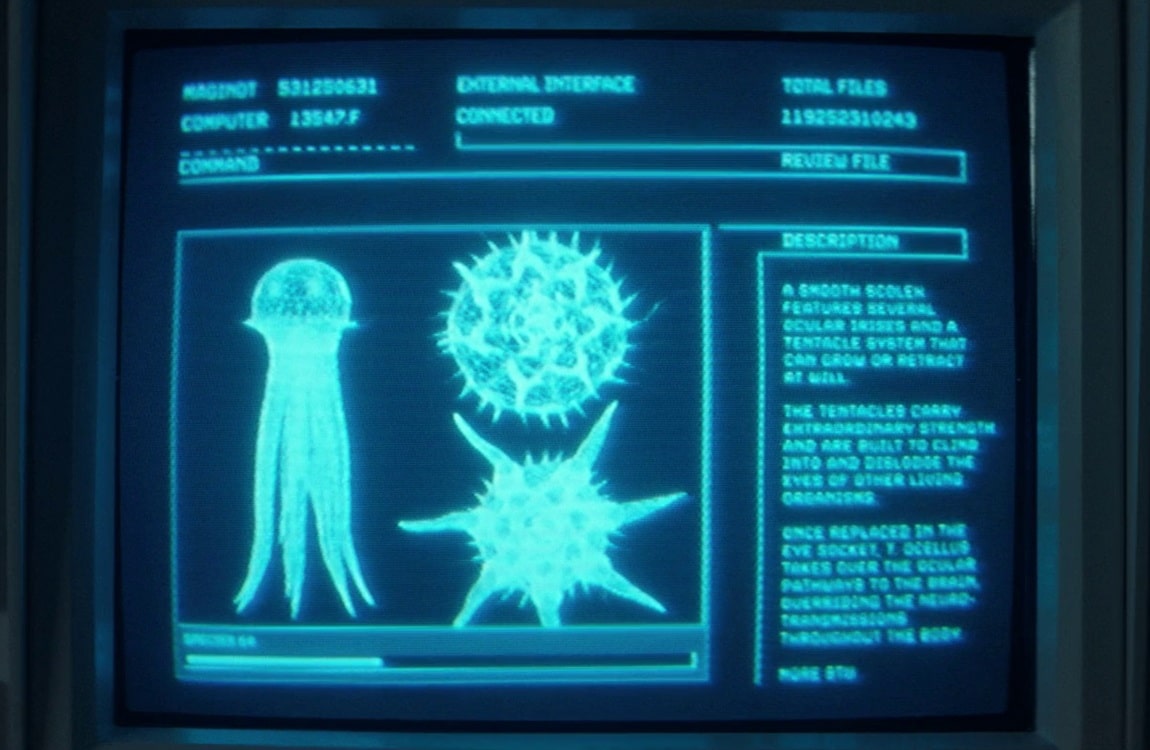
The anatomy of T. Ocellus included a smooth scoleum or rounded ocular body with a variable number of irises and powerful tentacles beneath. The tentacles were capable of growth or retraction, climbing into ocular cavities of hosts, dislodging host eyes, and positioning itself in place of the eye. The many irises could merge visually to mimic a single iris of the host, allowing the creature to camouflage visually once implanted. Its body was described as cephalopod-like, with some readers comparing it to a small octopus.

Infecting A Cat

After the Maginot crashed, T. Ocellus infected the ship's cat, “Rascal,” by taking over its corpse. It animated the dead cat in order to move and attempt further infection of other creatures. This showed its capability to control dead tissue as well as living hosts and demonstrated its methods of locomotion when outside a fully functional host body. The cat had trouble moving; its rear legs had been disabled, but it kept crawling on its front legs.
Infecting A Sheep
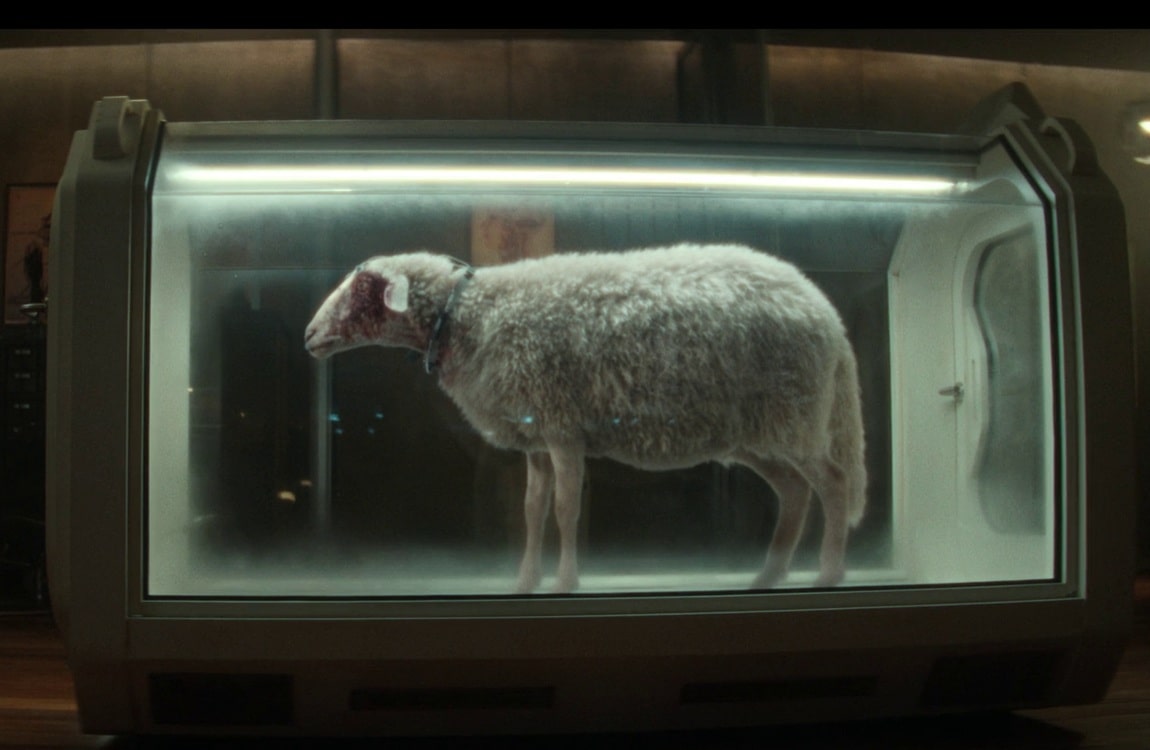
In a similar way that it infected the ship's cat, the T Ocellus infected a sheep on Prodigy Island. However, this was a controlled experiment by the Prodigy Corporation, which had captured the T Ocellus in the USCSS Maginot wreckage using its hybrids. The sheep was held in a small cage and kept under constant surveillance. The T Ocellus was able to observe other creatures in the Prodigy lab and help in their escape. While in its sheep form, the T Ocellus gained the curiosity of Boy Kavalier, who realized it was one of the most intelligent creatures in their captivity.
Infecting A Human
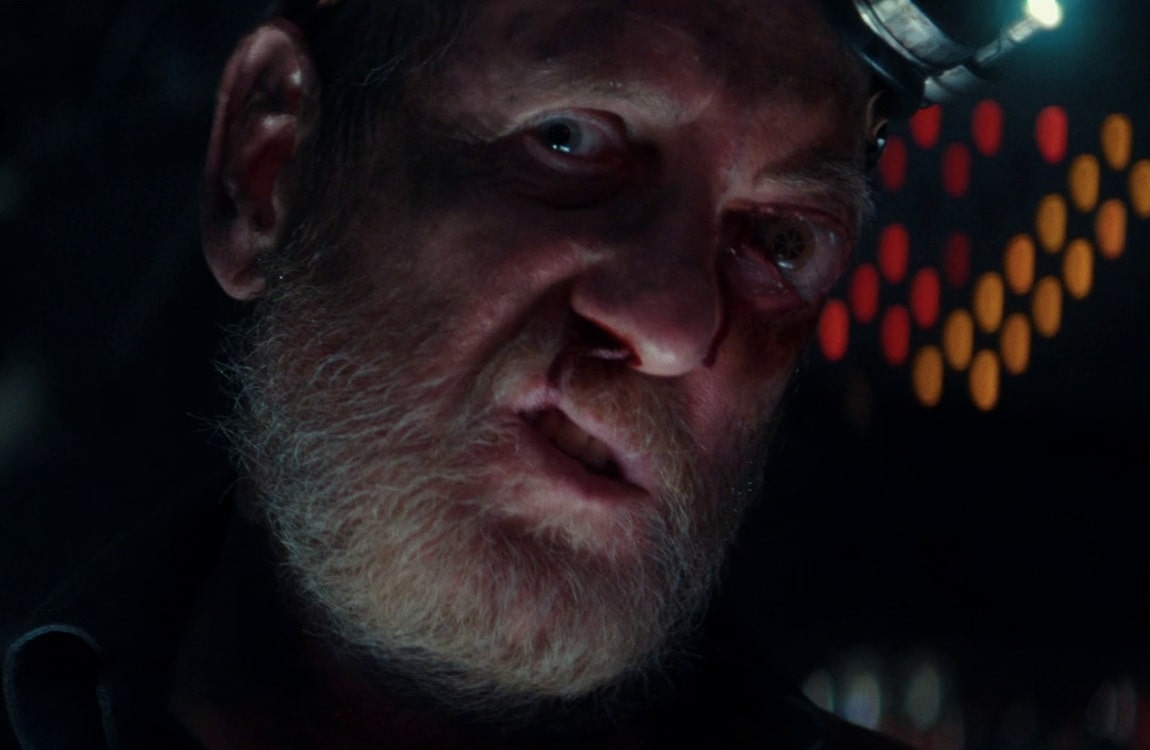
T. Ocellus infected a human by first dislodging an eye via its tentacles and then replacing it with itself. Once in the socket, it hijacked the ocular pathway and overrode neurological signals, thereby taking physical control of the host. It was observed to produce altered behaviors, increased mobility, and perform actions outside the normal capacity of the host body. The host’s replaced eye appeared almost normal to others, concealing the parasite’s presence. This way, the T Ocellus infected the USCSS Maginot's engineer Shmuel, one of the final survivors of the ship.
T. Ocellus Vision
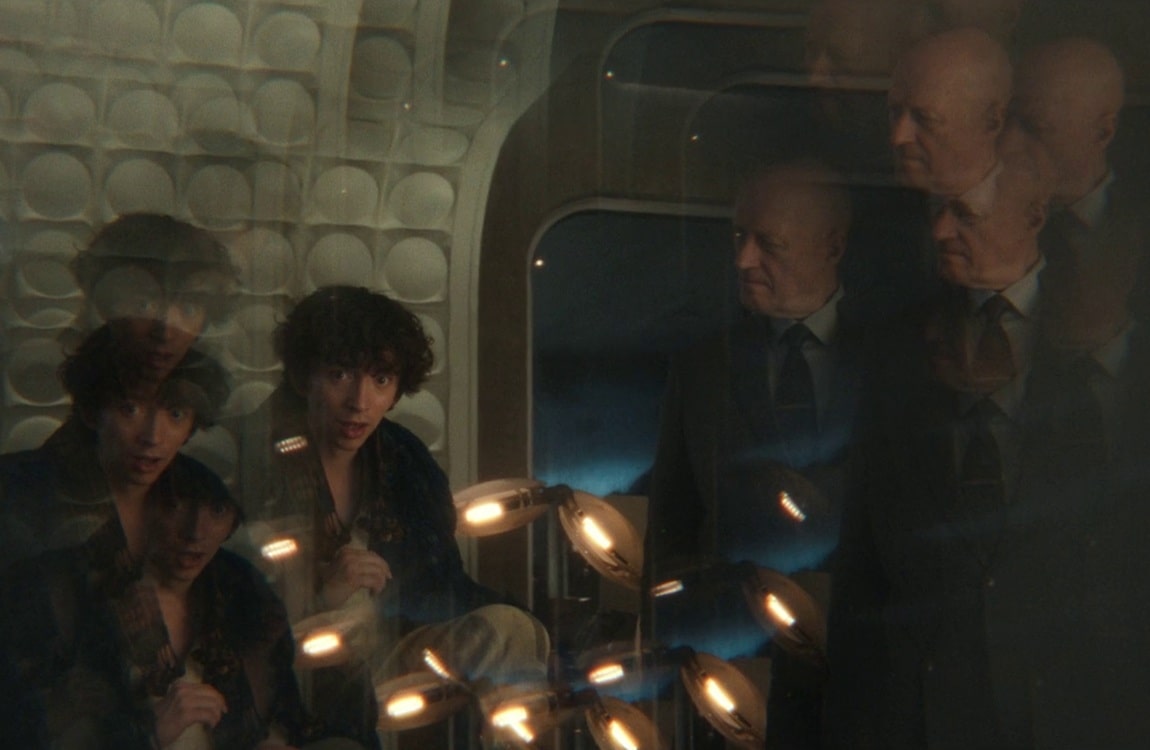
Vision of T. Ocellus was strongly tied to its host. Once implanted, it mimicked the host’s eye structure—number and shape of pupils, iris characteristics, etc.—in order to appear as though the host still had their original eye. Before or outside of a host, its own ocular body could show multiple irises, and it altered pupils depending on context. Alien: Earth gives multiple glimpses of the creature's vision, offering a circular and somewhat blurry perspective, with the middle part being in focus.
Communication
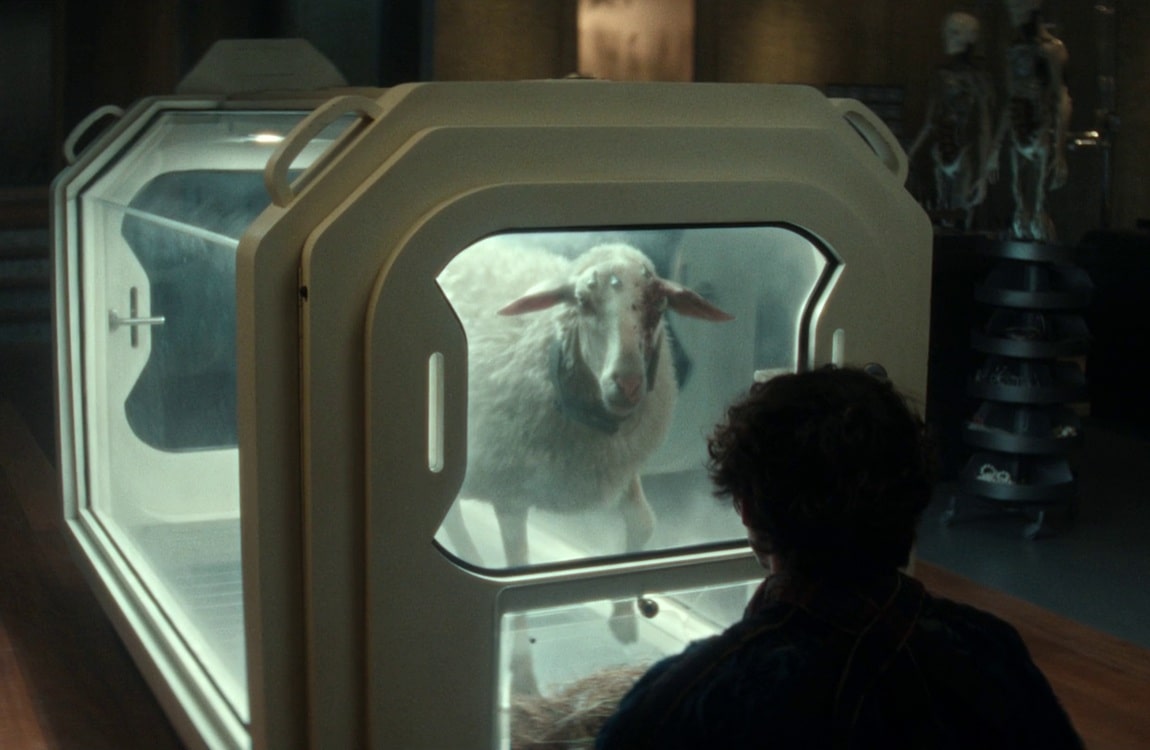
T. Ocellus did not communicate via conventional speech; instead, it demonstrated awareness and problem‐solving ability. It reacted to threats (such as perceiving a human pointing a gun at a host it controlled), showed distractions (e.g. tapping on glass), and manipulated its environment to escape containment. These behaviors implied high cognitive capacity, near human-level in some tests. When Boy Kavalier tried to communicate with the T Ocellus while it took possession of a sheep, it recognized the number Pi, and offered the 2 digits that come after 3.14. It did this by tapping the sheep's front leg, indicating it could understand Boy Kavalier, and even Arabic numbers.
T. Ocellus vs. Xenomorph
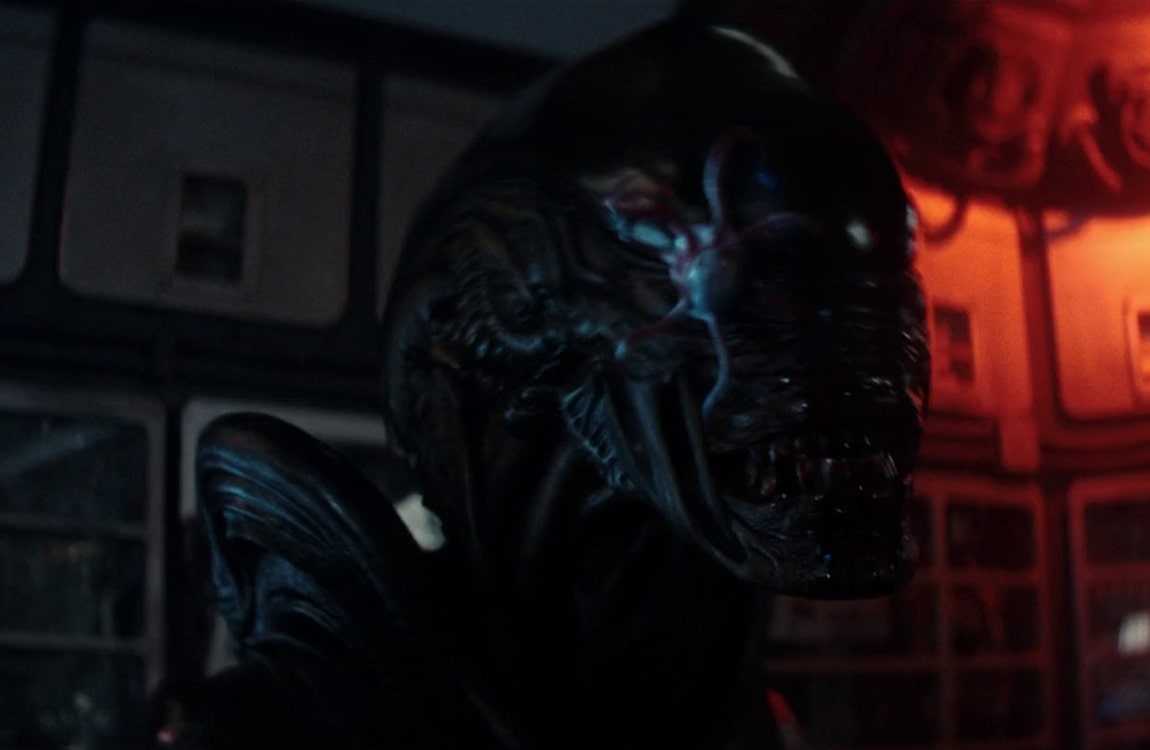
When confronted by a Xenomorph on the USCSS Maginot, T. Ocellus engaged directly in combat. It bit the Xenomorph when controlling a host (Shmuel the engineer), and responded to what appeared to be pain when it was impaled. It was later separated from the host body and survived a one-on-one encounter with a Xenomorph after the host died. The T Ocellus even seemingly tried to infect the Xenomorph's head, but was unable to find any eye socket to insert itself into. This encounter showed that the two creatures act very aggressively toward eachother, although they might have common interests in killing humans.
Conclusion
T. Ocellus was a unique and dangerous alien parasite that displayed both biological sophistication and intellect. Its origin planet is not fully explained, but can be revealed in a later season of Alien: Earth. It was perhaps the most intelligent creature of the several Alien species collected by the USCSS Maginot. Its ability to mimic eyes, override neural control, infect both dead and living hosts, and withstand direct conflict made it a formidable antagonist to both humans and the Xenomorph.
Tag Categories: Alien: Earth Lore


